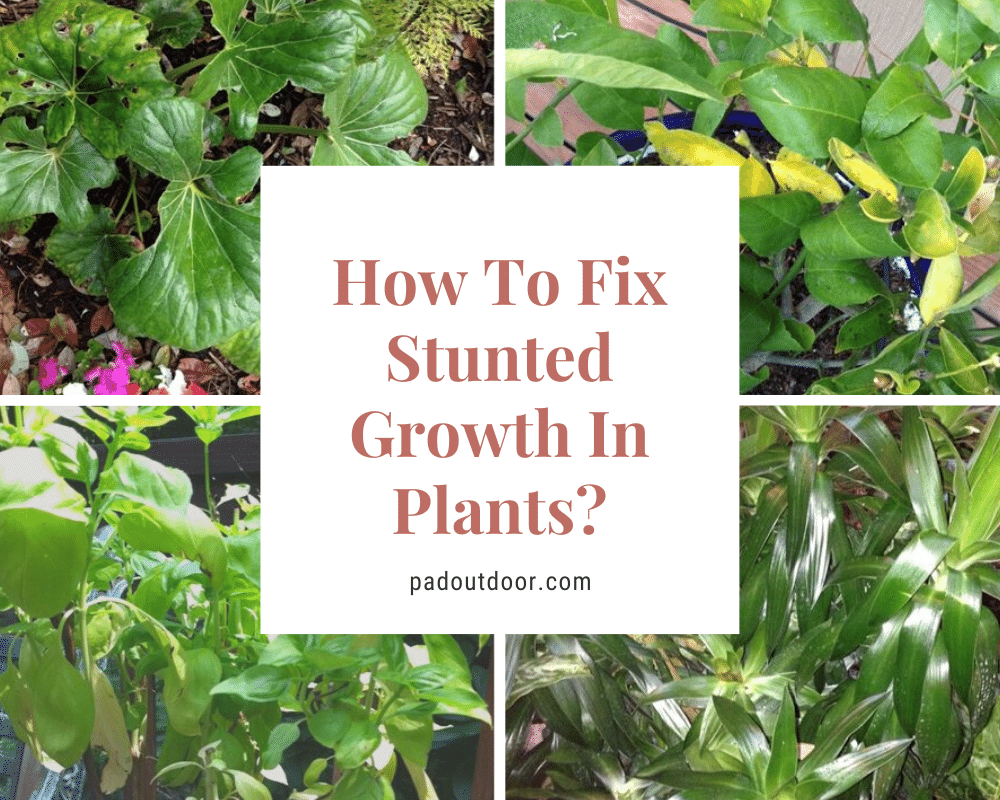Don’t know why plants have stunted growth? There are various reasons that cause this phenomenon. Learn the causes & tips on how to fix stunted growth in plants.

Decorative and vegetative plants are more stunning to look at if they grow healthily and in the right direction, which is upright.
But what does it mean when plants have stunted growth? Is this normal or could this be a sign of plant disease?
Today, we will solely focus on probing the reasons why some plants tend to stunt while they are growing. We will discuss its causes, as well as provide some ways on how to fix stunted growth in plants.
What Causes Stunted Growth In Plants And How To Fix Them?
No matter how much love and care you put to your plants, they are still susceptible to stunted growth, which makes them look unhealthy.
Knowing what causes this phenomenon to happen will help you minimize having stunted growth. In fact, some of the reasons can actually be prevented before the plants reach their maturity stage.
Listed below are some of the common causes of stunted growth. We also include tips on how to fix stunted growth in plants:
Nutrient Deficiencies
Plants, just like humans, need certain nutrients for them to grow healthily. When one or some of these nutrients are lacking, this will cause the plant to look sickly and anemic even, thus restricting their growth.
Plants need a certain amount of magnesium, nitrogen, and potassium. These three nutrients are vital so that plants will have lush foliage and strong roots. Applying fertilizers that are rich in these nutrients will help combat nutrient-deficiencies.
It is ideal to add fertilizers periodically once or twice a year. Usually, the best time to add fertilizers is during spring when the plants are about to enter its blossom stage.
Viral Infections
Plants are also susceptible to viruses and when a virus attacks the plant, this can inhibit proper growth, thus making the plants look stunted.
Viruses are hard to get rid of since they target the plant’s cell, which limits the production of chlorophyll. Because plants can’t complete the process of photosynthesis due to a shortage of chlorophyll, the result is poor foliage and smaller flowers.
Since most viruses are spread through insects, it is best to apply strict measures to control pests and insects infestations in your garden. Using certain chemicals like insecticides and pesticides are very helpful. However, knowing the type of insects present in your garden is vital in choosing the right chemicals to use.
Dehydration
Aside from viruses and nutrient deficiencies, dehydration is also a culprit of stunted growth in plants. Thirsty plants cannot grow healthily, thus they have stunted growth.
On the other hand, too much water can also harm the plant as it can rot the roots, which might lead to needle blight (a deadly non-parasite disease that can kill the plants).
The best solution to this is proper hydration. Knowing when and when not to water plants are essential knowledge that you should master. It is best to water plants in the morning when the sun is not fully out yet, this will allow the water to be absorbed into the roots.
At the same time, the excess water will be evaporated during the late morning to early afternoon when the plant received a great amount of sunlight, thus minimizing the possibility of needle blight.
Inappropriate Container Or Pot
Lastly, using an inappropriate container can also cause the plants to grow stunted. Remember that the roots of some plants expand at great length. This is the reason why a bigger container is recommended.
If you use a small container, the roots can’t expand properly. This means that the roots can’t hold too much onto the soil so as to support the whole length and weight of the plants. The result is ugly and awkward growth of the plants.
How to fix stunted growth in plants? Invest in bigger containers with drainage.
Stunted growth in plants doesn’t happen out of anywhere. Identifying the cause will help you think and execute the right solutions.
Try the tips above and let us know your experience. Thanks for reading!
Recommended Reading:







